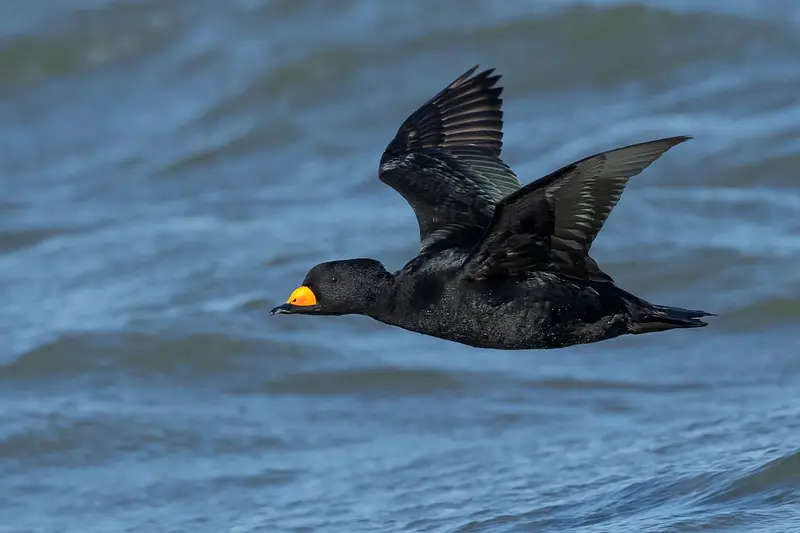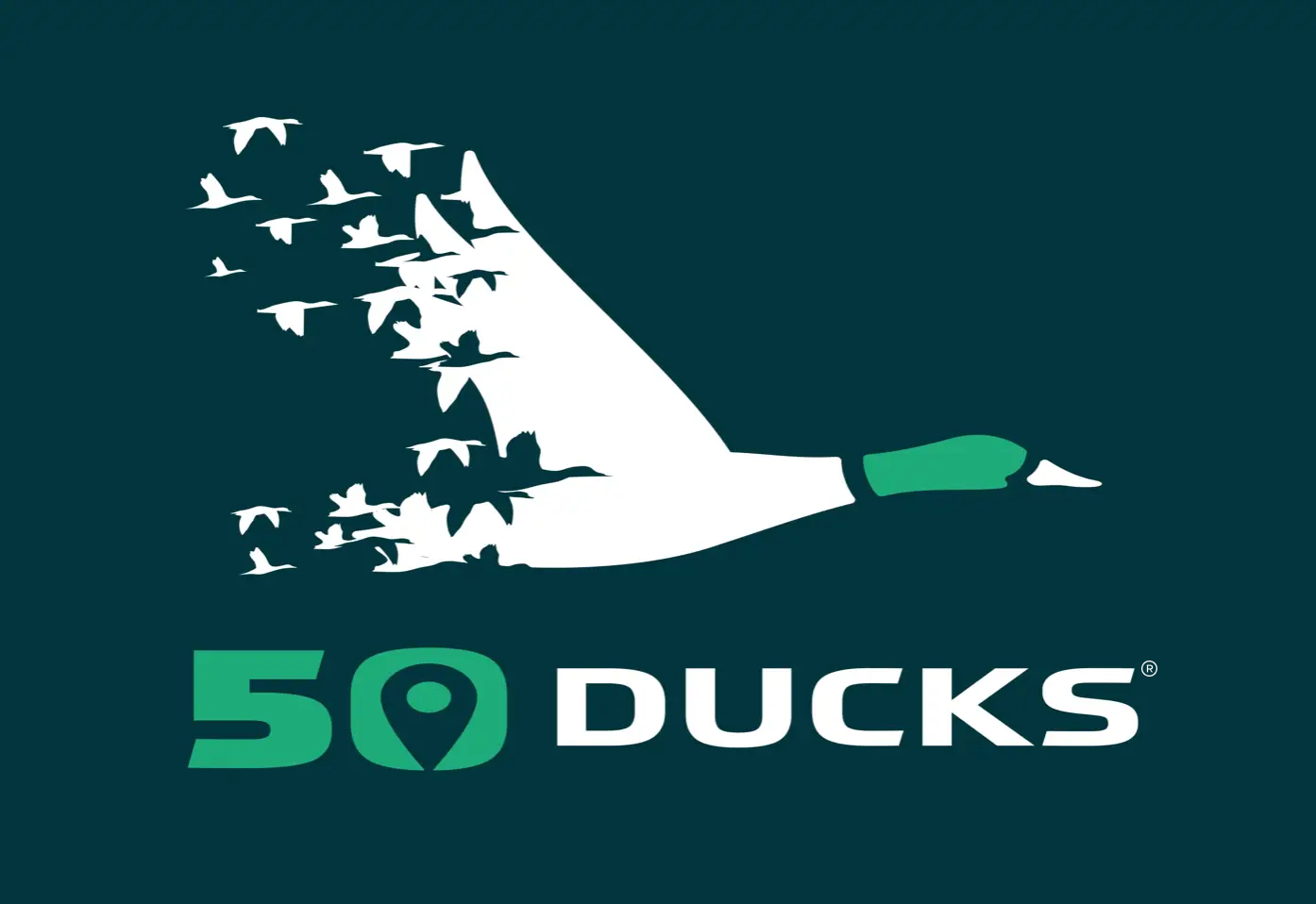About Black Scoter
The Black Scoter (Melanitta americana ) is a medium-sized diving duck that can be found along both coasts of the United States. Males are sleek black with a distinctive orange knob at the base of their bills, making them easily recognizable. Females are more subdued in color, with brown plumage and paler faces.

Identification
Black Scoters can be identified by their medium size and distinct coloration. Males are completely black with a prominent orange knob at the base of their bills, while females are brown with lighter faces and darker caps. This sexual dimorphism makes it easy to distinguish between the sexes.
Breeding
Black Scoters breed in the northern tundra and boreal forests, preferring wetlands with abundant vegetation for nesting. The female constructs a nest on the ground, usually near water, and lays a clutch of 6-9 eggs. She incubates the eggs alone and is responsible for rearing the ducklings.
Behavior
They are diving ducks, known for their ability to dive underwater to forage for food such as mollusks, crustaceans, and aquatic insects. Their excellent diving skills and extended submersion capabilities make them effective foragers in their aquatic habitats. During migration, they often travel in cohesive groups, displaying strong flocking behavior which helps them navigate and locate food sources.
Habitat
During the breeding season, Black Scoters inhabit wetlands in the northern tundra and boreal forests. In winter, they migrate to coastal bays, estuaries, and large inland lakes where they can find ample food and suitable conditions for diving and foraging. Their adaptability to various aquatic environments allows them to thrive across a broad range of habitats.
Migration
Black Scoters are long-distance migrants, traveling from their breeding grounds in the northern tundra and boreal forests to wintering areas along the Atlantic and Pacific coasts. They migrate in large flocks and are often seen in coastal bays and estuaries during their journeys.
No Data Found
How many days tracked
Lorem ipsum dolor sit amet, consectetur adipiscing elit. Ut elit tellus, luctus nec ullamcorper mattis, pulvinar dapibus leo.
Where are they now?
Lorem ipsum dolor sit amet, consectetur adipiscing elit. Ut elit tellus, luctus nec ullamcorper mattis, pulvinar dapibus leo.
No Data Found
No Data Found
Total Number of Data Points for Black Scoter
Lorem ipsum dolor sit amet, consectetur adipiscing elit. Ut elit tellus, luctus nec ullamcorper mattis, pulvinar dapibus leo.
Start and End Date Tracking of Black Scoter
Lorem ipsum dolor sit amet, consectetur adipiscing elit. Ut elit tellus, luctus nec ullamcorper mattis, pulvinar dapibus leo.
No Data Found
Overall Data from the Center
This is historical data from various sources. This data is available in its full form on our Duck Map in an easily visualizable format.
